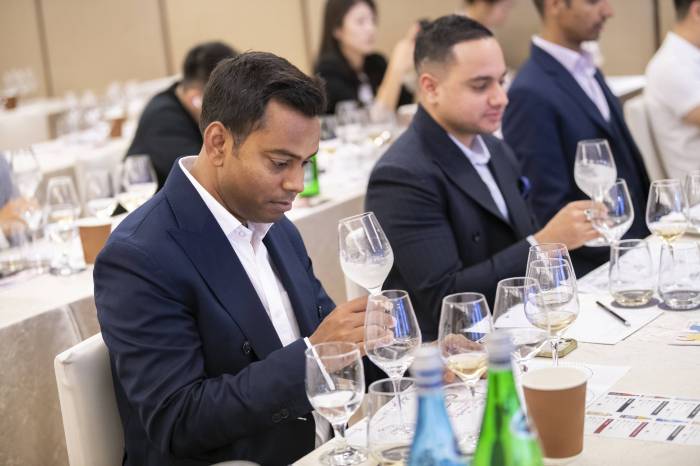Japan’s Sake Exports Grow to 43.5 Billion Yen
Japan’s sake exports surge 80% since 2020
2025-10-04

Sake Day, observed every October 1, has marked a significant moment for Japan’s sake industry since its establishment by the Japan Sake and Shochu Makers Association (JSS) in 1978. The date was chosen to honor both the traditional start of the sake brewing year and the cultural symbolism of the Chinese character for “October,” which also refers to alcoholic beverages. Over nearly five decades, Sake Day has become an occasion for events across Japan and internationally, encouraging people to enjoy and learn about sake.
The landscape for sake has changed dramatically since the 1970s. In 1973, domestic shipments peaked at about 197 million nine-liter cases. By 2023, that number had dropped to around 47 million cases, just a quarter of its former volume. Despite this decline, sake remains a staple in Japanese culture, with per capita consumption in 2023 at 3.8 liters—higher than wine’s 3.2 liters per person.
While domestic consumption has fallen, international interest in sake has grown sharply. In 1988, exports totaled about 2.2 billion yen to 50 countries and regions, with an average price of just 243 yen per 720ml bottle. By 2024, exports had reached approximately 43.5 billion yen to 80 countries and regions, and the average price per bottle had climbed to about 1,008 yen. Between 2020 and 2024 alone, export value increased by roughly 80 percent.
Premium sake categories such as Junmai and Junmai Daiginjo have gained popularity abroad, with a wide range of flavor profiles now available globally. Production regions are also seeking Geographical Indication (GI) status to protect their names and promote regional identity; as of this year, 18 regions have secured GI recognition.
A key factor in recent export growth is collaboration with international sommelier associations. The JSS’s partnership with the Association de la Sommellerie Internationale (ASI) has helped make sake knowledge a requirement among top sommeliers worldwide. At the Best Sommelier of Asia & Pacific competition held in Malaysia in September 2025, sake was featured prominently. Nanoha Higuchi, Overseas Business Department Manager at JSS, noted that luxury restaurant groups in Australia and fine dining establishments in Vietnam are now offering sake pairings—an indication that sake is moving beyond casual Japanese restaurants into high-end venues.
Despite these successes abroad, the industry faces serious challenges at home due to rising rice prices and supply shortages. Sake breweries rely on three types of rice: sake-specific rice (shuzo-koteki-mai), rice for processed foods, and table rice. Sake rice is more labor-intensive to grow and yields less than other varieties, making it about twice as expensive. The most well-known variety is Yamada Nishiki. Since last year, disruptions in table rice supply and rising prices have reduced farmers’ incentives to grow sake rice. If this trend continues, more farmers may switch from cultivating sake rice to table rice, threatening the future of premium sake production.
To address these issues, the JSS is urging government action while also focusing on global promotion efforts. In November 2025, five renowned sommeliers will visit Japan’s Tohoku region—a major sake-producing area—to tour breweries and learn about fermentation culture through visits to koji mold makers and miso producers. These experiences aim to deepen their understanding of sake so they can share their knowledge internationally.
The JSS plans to continue its presence at major trade fairs such as Wine Paris and ProWein in 2026. It will also expand educational programs with national sommelier associations, organize events in Poland, and run its annual Japan Sake and Shochu Academy training program.
Within Japan, breweries are developing new products like low-alcohol and sparkling sakes to attract younger consumers. Restaurants are also popularizing “Sake-High,” a mix of sake with soda water. The JSS and brewers are working together to adapt to changing consumer preferences while maintaining the tradition and appeal of sake both domestically and abroad.
As the industry navigates export growth alongside domestic challenges from rising costs and shifting agricultural priorities, stakeholders remain committed to promoting sake’s unique qualities worldwide and ensuring its future as a symbol of Japanese culture.
Founded in 2007, Vinetur® is a registered trademark of VGSC S.L. with a long history in the wine industry.
VGSC, S.L. with VAT number B70255591 is a spanish company legally registered in the Commercial Register of the city of Santiago de Compostela, with registration number: Bulletin 181, Reference 356049 in Volume 13, Page 107, Section 6, Sheet 45028, Entry 2.
Email: [email protected]
Headquarters and offices located in Vilagarcia de Arousa, Spain.